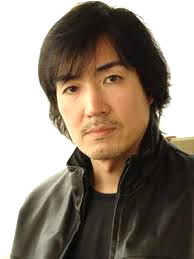Note: This novel was WINNER of the 2005 Naoki Prize for Best Novel in Japan, and also WINNER of both the Edogawa Rampo Prize and the Mystery Writers of Japan Prize for Best Mystery.
“[A famous mathematical conundrum], the P= NP problem, basically asks whether it’s more difficult to think of the solution to a problem yourself or to ascertain if someone else’s answer to the same problem is correct…Only if you can prove that there are no legitimate answers other than the one offered, can you say that this is the only solution to the problem.”—Manabu Yukawa, physics professor
 Mathematical genius Tetsuya Ishigami and his equally brilliant friend Manabu Yukawa, from the physics department at Imperial University in Tokyo, are at the heart of Keigo Higashino’s complex and satisfying murder mystery from Japan. From the outset the reader knows who has killed a loathsome and terrifying bully; the big question is whether or not the person will ever be caught. The victim, Shinji Togashi, has been divorced from Yasuko Hanaoka for five years, but he has constantly haunted her, wanting money, pushing her around, and making life miserable for her and her teenage daughter Misato. When Togashi threatens his stepdaughter Misato, she strikes out, and when he retaliates, his death is swift. Panicked by the outcome, Yasuko and Misato become willing participants in a “solution” offered by their shy and overweight next-door neighbor, professor Tetsuya Ishigami, who has heard the commotion. All of them believe that Togashi deserved to die, but only Ishigami, the mathematical genius, can think clearly under the circumstances. Knowing that “he would never be this close to so beautiful a woman ever again,” Ishigami asks Yasuko to “Trust me. Logical thinking will get us through this.” He takes over.
Mathematical genius Tetsuya Ishigami and his equally brilliant friend Manabu Yukawa, from the physics department at Imperial University in Tokyo, are at the heart of Keigo Higashino’s complex and satisfying murder mystery from Japan. From the outset the reader knows who has killed a loathsome and terrifying bully; the big question is whether or not the person will ever be caught. The victim, Shinji Togashi, has been divorced from Yasuko Hanaoka for five years, but he has constantly haunted her, wanting money, pushing her around, and making life miserable for her and her teenage daughter Misato. When Togashi threatens his stepdaughter Misato, she strikes out, and when he retaliates, his death is swift. Panicked by the outcome, Yasuko and Misato become willing participants in a “solution” offered by their shy and overweight next-door neighbor, professor Tetsuya Ishigami, who has heard the commotion. All of them believe that Togashi deserved to die, but only Ishigami, the mathematical genius, can think clearly under the circumstances. Knowing that “he would never be this close to so beautiful a woman ever again,” Ishigami asks Yasuko to “Trust me. Logical thinking will get us through this.” He takes over.
 When Togashi’s nude body is later discovered under the Shin-Ohashi Bridge, it is difficult to identify. The face is smashed, and there are no fingerprints or teeth to allow for easy identification. When he is eventually identified through other means, Yasuko and Misato have air-tight alibis. Police Det. Kusanagi feels that something is not quite right, however, something he discusses when he visits the physics professor Yukawa, his long-time friend. Yukawa often offers friendly lessons in pure deductive reasoning and provides logical direction for Kusanagi and the police.
When Togashi’s nude body is later discovered under the Shin-Ohashi Bridge, it is difficult to identify. The face is smashed, and there are no fingerprints or teeth to allow for easy identification. When he is eventually identified through other means, Yasuko and Misato have air-tight alibis. Police Det. Kusanagi feels that something is not quite right, however, something he discusses when he visits the physics professor Yukawa, his long-time friend. Yukawa often offers friendly lessons in pure deductive reasoning and provides logical direction for Kusanagi and the police.
Yukawa, sometimes called “Professor Galileo,” has also known Ishigami since they were students at the Imperial University. On a visit to Ishigami’s apartment after the murder, they begin to chat, and Yukawa sums up the basic problem of the murder investigation.
“The investigators have been fooled by the criminal’s camouflage. Everything they think is a clue isn’t…[it] is merely a breadcrumb set in their path to lure them astray. When an amateur attempts to conceal something, the more complex he makes his camouflage, the deeper the grave he digs for himself. But not so a genius. The genius does something far simpler, yet something no normal person would even dream of, the last thing a normal person would think of doing. And from this simplicity, immense complexity is created.”
 Meanwhile, the daily lives of the characters continue – with Yasuko working at a small Benten-tei luncheon shop, Misato going to school, Ishigami teaching his classes, Kuniaki Kudo inviting Yasuko out to dinner, Ichigami and Yukawa chatting about problem-solving, and Kusanagi following various characters in an effort to figure out who the killer is. Eventually, Yukawa even suggests that Ichikawa keep tabs on Yasuko and report on her actions, one of the ironies that pervade the novel.
Meanwhile, the daily lives of the characters continue – with Yasuko working at a small Benten-tei luncheon shop, Misato going to school, Ishigami teaching his classes, Kuniaki Kudo inviting Yasuko out to dinner, Ichigami and Yukawa chatting about problem-solving, and Kusanagi following various characters in an effort to figure out who the killer is. Eventually, Yukawa even suggests that Ichikawa keep tabs on Yasuko and report on her actions, one of the ironies that pervade the novel.
The chess-like maneuvering between the two geniuses – Yukawa and Ichigami – greatly resembles that of Sherlock Holmes and Prof. Moriarty, even to its clipped dialogue, but this novel has a love interest to keep things more realistic and more fun. The reader develops some empathy for Ishigami and for the hard life that prevented him from pursuing his doctorate, and its entrée into academia. His shyness, his unattractive appearance, and his lack of communication skills, allow the reader to appreciate how the plight of Yasuko and Miyato has offered him a chance, at last, to feel like a man. The remainder of the characters, however, are flat, and while some, like Prof. Yukawa, are not exa ctly “typical,” in that few mysteries feature characters with his level of brilliance, he is not a character one comes to know. Yasuko, the victim’s ex-wife, a former club dancer who now works in a lunch shop, is so shallow that it is difficult to gain any understanding of her – she is someone who is considered pretty but not much else.
ctly “typical,” in that few mysteries feature characters with his level of brilliance, he is not a character one comes to know. Yasuko, the victim’s ex-wife, a former club dancer who now works in a lunch shop, is so shallow that it is difficult to gain any understanding of her – she is someone who is considered pretty but not much else.
An unusual “police procedural” in that the police seem to be free to follow their own instincts with little interference from their superiors, The Devotion of Suspect X works its way up to a surprising climax and resolution, one which few will expect, proving exactly what Yukawa has said all along, that the genius will do something that no normal person will ever think of doing, and from this simplicity will come immense complexity. Clever and unusual, this novel is a step above the traditional mystery in its concept, execution, and logi cal underpinnings, a welcome addition to the genre. The carefully composed details and slow unraveling of the action keep the reader thinking on more than one plane – not just about whether the killer or killers will get away with the murder of a person who is no real loss to society, but about the interactions of human beings and the discovery of what is real, as opposed to camouflage.
cal underpinnings, a welcome addition to the genre. The carefully composed details and slow unraveling of the action keep the reader thinking on more than one plane – not just about whether the killer or killers will get away with the murder of a person who is no real loss to society, but about the interactions of human beings and the discovery of what is real, as opposed to camouflage.
Photos, in order: The author’s photo is from http://asianmediawiki.com
The Shin-Ohashi Bridge, near where the victim’s body is found, appears on http://pictures.traveladventures.org
A homeless encampment, with its variety of characters, along the side of the Sumida River, is featured here: http://www.sumidacrossing.org
A small lunch shop like the one where Yasuko works may be seen here: http://midtownlunch.com
